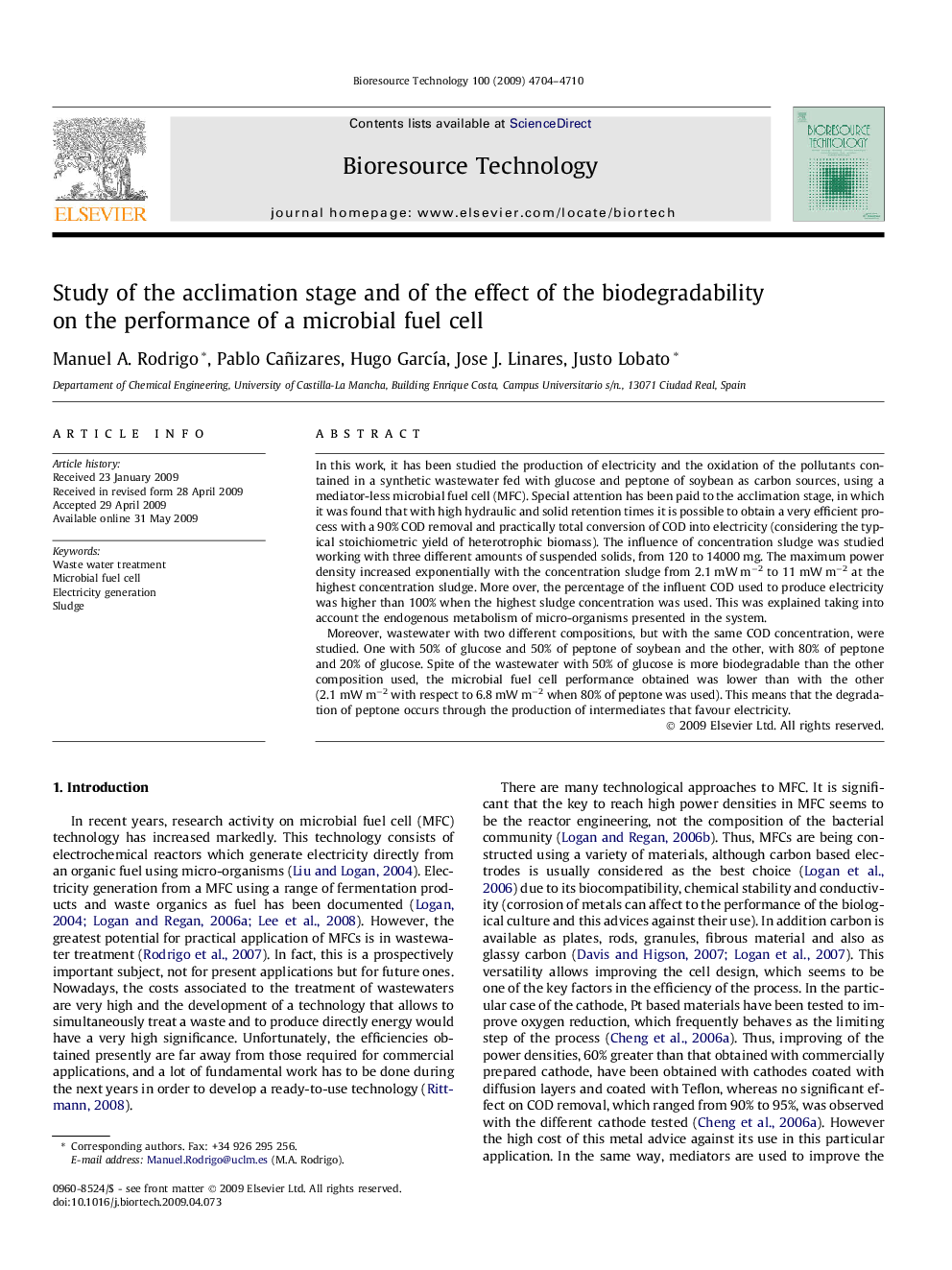| Article ID | Journal | Published Year | Pages | File Type |
|---|---|---|---|---|
| 683155 | Bioresource Technology | 2009 | 7 Pages |
In this work, it has been studied the production of electricity and the oxidation of the pollutants contained in a synthetic wastewater fed with glucose and peptone of soybean as carbon sources, using a mediator-less microbial fuel cell (MFC). Special attention has been paid to the acclimation stage, in which it was found that with high hydraulic and solid retention times it is possible to obtain a very efficient process with a 90% COD removal and practically total conversion of COD into electricity (considering the typical stoichiometric yield of heterotrophic biomass). The influence of concentration sludge was studied working with three different amounts of suspended solids, from 120 to 14000 mg. The maximum power density increased exponentially with the concentration sludge from 2.1 mW m−2 to 11 mW m−2 at the highest concentration sludge. More over, the percentage of the influent COD used to produce electricity was higher than 100% when the highest sludge concentration was used. This was explained taking into account the endogenous metabolism of micro-organisms presented in the system.Moreover, wastewater with two different compositions, but with the same COD concentration, were studied. One with 50% of glucose and 50% of peptone of soybean and the other, with 80% of peptone and 20% of glucose. Spite of the wastewater with 50% of glucose is more biodegradable than the other composition used, the microbial fuel cell performance obtained was lower than with the other (2.1 mW m−2 with respect to 6.8 mW m−2 when 80% of peptone was used). This means that the degradation of peptone occurs through the production of intermediates that favour electricity.
